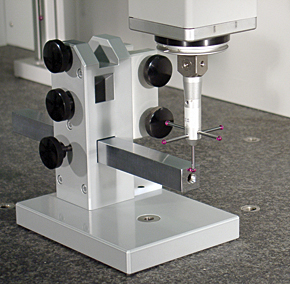Introduction to Coordinate Measuring Machines
Today’s Coordinate Measuring Machines (CMMs) offer unprecedented speed, accuracy, and flexibility for dimensional metrology, data collection, and geometric or statistical analysis. From the smallest job shops to the largest multinational corporations, CMMs have become essential tools for achieving quality. But the capabilities and limitations of CMMs vary tremendously from one machine to another.
Introduction to Coordinate Measuring Machines provides an overview of all aspects of selecting and using CMMs. Representative examples of all types of CMMs, from a wide variety of manufacturers, are discussed. The Seminar includes the latest information on manual and computer controlled machines at every level of sophistication. The content can be customized to include information on the specific machines that are of interest to your company.
Introduction to Coordinate Measuring Machines is oriented toward Managers, Supervisors, Operators, Engineers, and Quality Professionals. It consists of six instructional units and requires approximately eight hours for presentation. Participant materials include copies of selected illustrations and reprints of key Coordinate Measuring Machine articles and technical papers. Various presentation schedules are available to meet your requirements.
Please contact us to learn how to make better use of existing CMMs, how to understand their capabilities and limitations, and how to make better purchasing decisions on upgrades or new machines.
To download the data sheet for this program, please click here. (PDF)
Seminar Outline:
Unit 1 - Elements of Modern CMMs
Unit 2 - Coordinate Measurement

Unit 3 - Solid Geometric Measurement
Unit 4 - GDT and the CMM
Unit 5 - Human Factors and the CMM
Unit 6 - Measurement Uncertainty
Secrets of Marketing | Intro to ISO 9000 | ISO 9001 Int. Auditing | Implementing Six Sigma
Send mail to websupport@iplusnet.com with questions or comments about this web site.
Copyright © 2024 by Innovations PLUS. All rights reserved.
